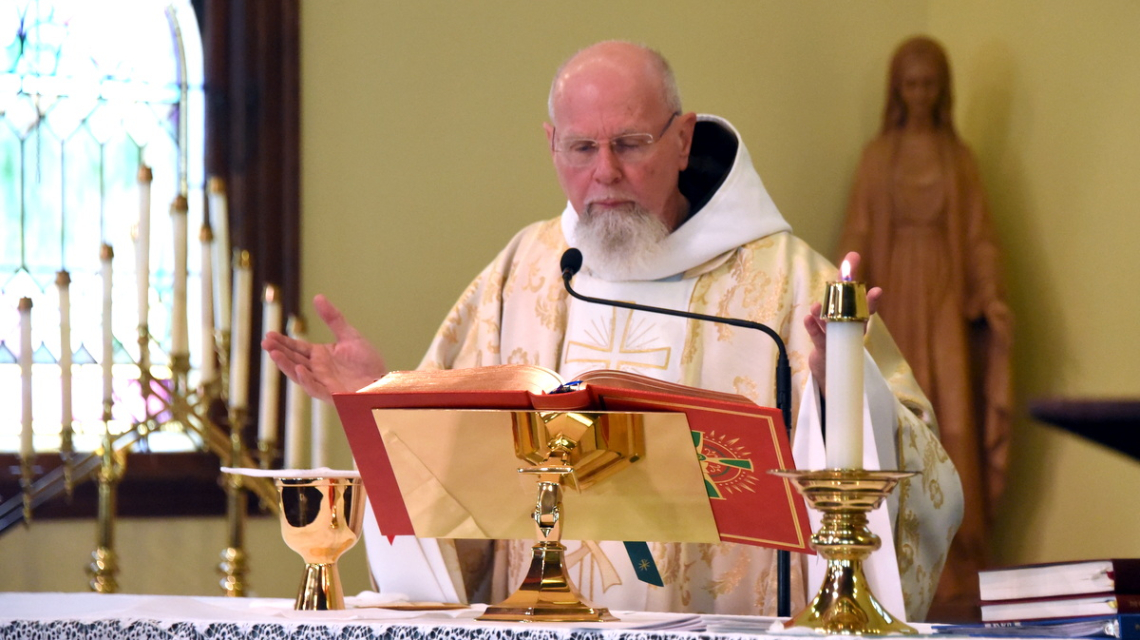The Eucharistic Prayer

The main elements of the Eucharistic Prayer
The main elements of which the Eucharistic Prayer consists may be distinguished from one another in this way:
a) The thanksgiving (expressed especially in the Preface), in which the Priest, in the name of the whole of the holy people, glorifies God the Father and gives thanks to him for the whole work of salvation or for some particular aspect of it, according to the varying day, festivity, or time of year.
b) The acclamation, by which the whole congregation, joining with the heavenly powers, sings the Sanctus (Holy, Holy, Holy). This acclamation, which constitutes part of the Eucharistic Prayer itself, is pronounced by all the people with the priest.
c) The epiclesis, in which, by means of particular invocations, the Church implores the power of the Holy Spirit that the gifts offered by human hands be consecrated, that is, become Christ's Body and Blood, and that the unblemished sacrificial Victim to be consumed in Communion may be for the salvation of those who will partake of it.
d) The Institution narrative and Consecration, by which, by means of the words and actions of Christ, that Sacrifice is effected which Christ himself instituted during the Last Supper, when he offered his Body and Blood under the species of bread and wine, gave them to the Apostles to eat and drink, and leaving with the latter the command to perpetuate this same mystery.
e) The anamnesis, by which the Church, fulfilling the command that she received from Christ the Lord through the Apostles, celebrates the memorial of Christ, recalling especially his blessed Passion, glorious Resurrection, and Ascension into heaven.
f) The oblation, by which, in this very memorial, the Church, in particular that gathered here and now, offers the unblemished sacrificial Victim in the Holy Spirit to the Father. The Church's intention, indeed, is that the faithful not only offer this unblemished sacrificial Victim but also learn to offer their very selves,and so day by day to be brought, through the mediation of Christ, into unity with God and with each other, so that God may at last be all in all.
g) The intercessions, by which expression is given to the fact that the Eucharist is celebrated in communion with the whole Church, of both heaven and of earth, and that the oblation is made for her and for all her members, living and dead, who are called to participate in the redemption and salvation purchased by the Body and Blood of Christ.
h) The concluding doxology, by which the glorification of God is expressed and which is affirmed and concluded by the people's acclamation "Amen."









